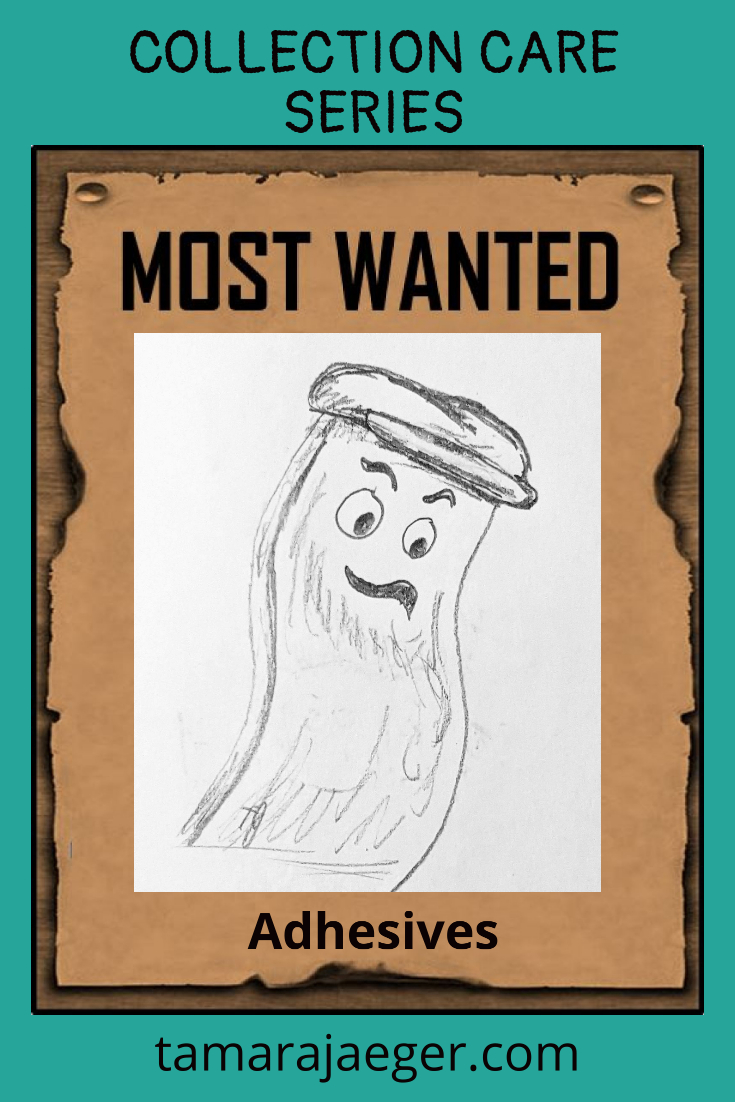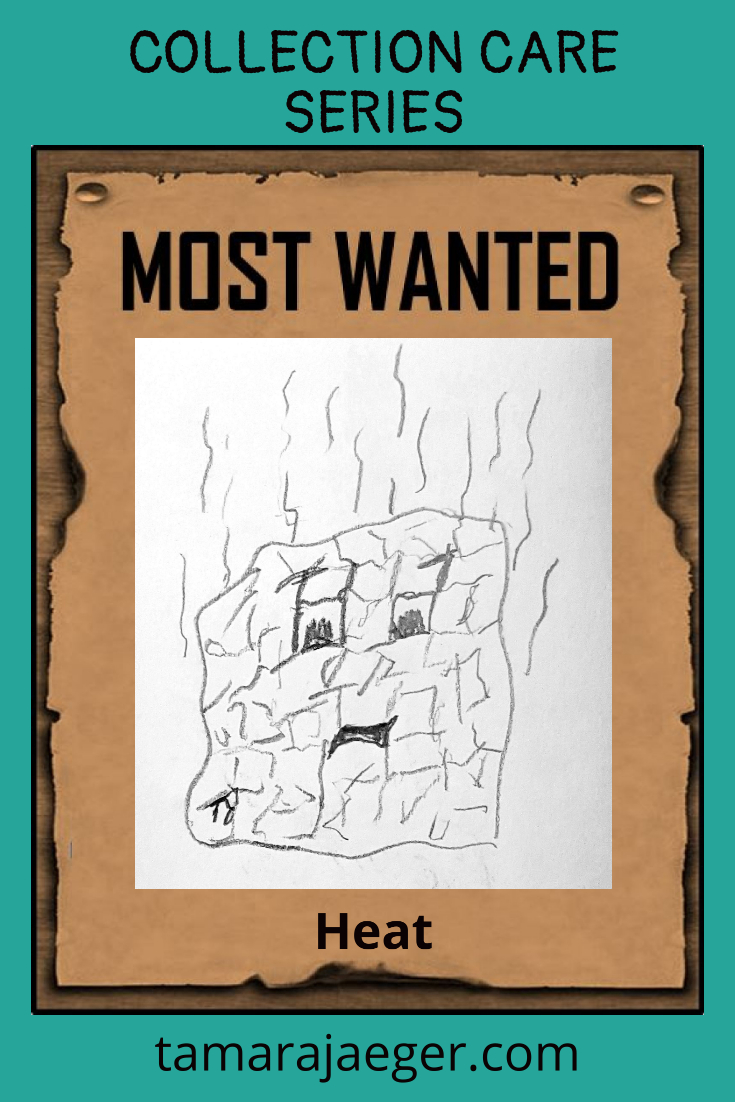Posts Tagged: film


Collection Care Series: Enemy #5: Adhesives
This week, we’ll be talking about our next enemy: Adhesives.
Adhesives, and particularly adhesive tape, can be a sticky subject when it comes to collections care. (Sorry, I couldn’t help myself! I’ll try to refrain from making any more bad puns. I can see your eyes rolling there!) There are several issues when it comes to adhesives.

First, there’s the adhesive itself, which can leave a sticky residue that can be very hard to remove without damaging your items. Old tape that’s left in place can leave the aged adhesive behind even after its stickiness is gone. Masking tape is terrible for this—you’re left with a hard, crusty, yellow material wherever the tape was.
Secondly, unless it’s specifically formulated to be acid-free and archival, your adhesive is probably acidic, which will damage vulnerable materials, just like non-archival, acidic packing materials like cardboard and newspaper. The acid in the adhesive will cause yellowing and discoloration of paper items and photographs, and will eventually cause even greater damage, like holes in the paper!
Avoid using non-acid-free adhesives on things you want to keep long term—masking tape, rubber cement, duct tape, etc. There are a Lot of different acid-free, archival adhesives that are easily available these days. The scrapbook craze has been a great thing for object conservation! My personal favorite, which I use for making my torn paper collages, is the Zig/EK Tools 2-way glue. It changes color as it dries and provides the option of a permanent bond (when it’s first applied and blue) or a removable bond (after it’s dried and clear).
Another place you’re likely to find acidic adhesives is, ironically, in older photo albums. I don’t mean the really old ones where the photos are held in place with those paper corner tabs, though those albums could possibly be made from acidic paper, so be aware. I’m talking about the ones that were popular in the 1970s and 1980s that had the slightly sticky lines across each page to hold the photos in place underneath a clear plastic sheet. My mother has Piles of this type of album, since that’s what was commonly available when my siblings and I were kids. By now, that adhesive is probably not even sticky anymore and is likely starting to cause damage, so if you have any of those albums, I’d recommend replacing them with newer, archivally-safe albums.
Paper and photographs are the most commonly-affected materials when it comes to damage from acidic adhesives. I’ve also had to deal with removing old masking tape adhesive residue from wooden objects, which was not a lot of fun—you can’t really use solvents, since they can damage the finish on the wood or cause the adhesive residue to sink into the wood where you’ll Never be able to get it out!
Another thing you should be aware of as far as acidic materials goes is metal items like staples and paperclips. If you have boxes of papers, documents, or photos, there’s a good chance there are some staples or paperclips in there somewhere. If so—get rid of them! The metal will rust over time (especially if they’ve been stored somewhere that gets pretty humid), and that red-orange iron staining it leaves behind? That’s Very acidic. It will quickly eat holes in your papers or photos.
Do you have any suspicious storage materials housing your old photos? Tell me in the comments!
Missed the previous posts? Start at the beginning of the collection care series here.
Want to stay up to date and see more of what I’m working on? Sign up for my mailing list here and get a FREE collection care resource guide. (I promise not to be spammy with my emails—I hate that too!)


Collection Care Series: Enemy #3: Heat
This week, we’ll be talking about our next enemy: Heat.
There are two issues with heat as far as your collections go. First, we have a bit of a chemistry-based issue. Higher temperatures increase chemical reaction rates and many deterioration processes are due to chemical reactions. So storing your item somewhere hot will cause it to deteriorate faster, even in the absence of other risk factors, such as light, which we talked about here. Secondly, higher temperatures usually result in lower relative humidity levels. If you missed it, we discussed problems related to humidity here.

Some items that can be damaged by heat include plastics, photos and negatives, paintings, and musical instruments. For these materials, avoid rapid changes in temperature, which can cause rapid humidity fluctuations. Plastics and photographic negatives are particularly susceptible to chemical degradation, which is accelerated at high temperatures. Avoid storing them in areas that can get very warm, such as attics or garages. You also want to keep in mind that when very cold, plastics get brittle and are vulnerable to damage from dropping or crushing. Again, don’t store them in places like attics and garages, since these areas tend to experience extremes and rapid changes in temperature and humidity levels.
Where do you store your vulnerable treasures? Tell me in the comments.
Check out the next post in the collection care series here.
Missed the previous posts? Start at the beginning of the collection care series here.
Want to stay up to date and see more of what I’m working on? Sign up for my mailing list here and get a FREE collection care resource guide. (I promise not to be spammy with my emails—I hate that too!)